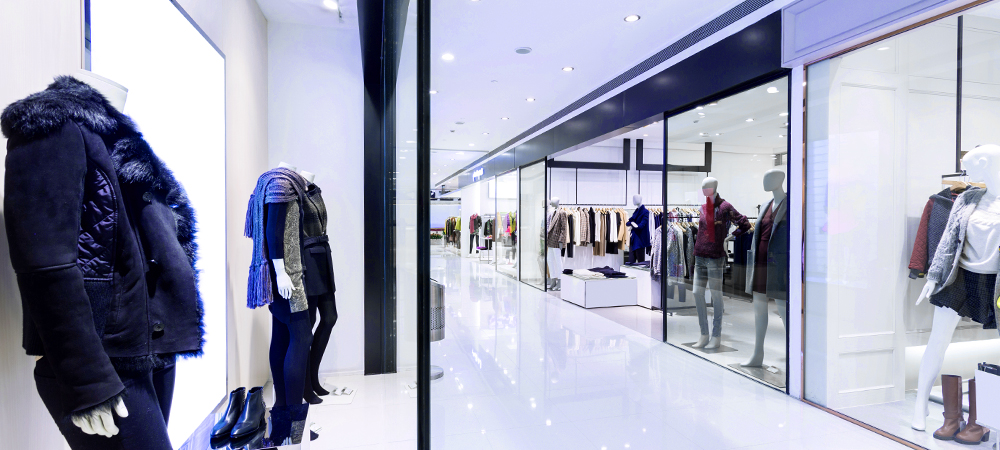Retail Loss prevention – a guide for retailers

Retail shrink costs the Australian industry billions each year and for the retailers looking to stem the flow of loss, keeping up to date with the best techniques and security can be challenging.
With that in mind here’s an up-to-date guide on loss prevention.
Four main areas
In Australia the cost of retail shrink currently sits at $3.37 billion with four main areas contributing to that loss.
For retailers looking to minimise the shrink, it’s important to understand where and when it might be occurring.
External theft
The greatest cause of shrink is external theft which in 2017/18 was believed to account for 57 per cent of all loss in the Australian retail sector. External theft encompasses crimes like shoplifting, return fraud and credit card fraud.
Internal theft
Perpetrated by people who work within a retail outlet, internal theft is currently responsible for 22 per cent of all retail loss. It’s a crime that involves actions like employee fraud and employee theft.
Non crime-related loss
Mistakes happen and in retail it’s no different. About 15 per cent of all loss is believed to be non crime-related and is simply put down to administrative error
Supplier fraud
Supplier fraud accounts for the smallest percentage of retail loss, but takes a hefty toll none-the-less. It’s estimated to make up six per cent of loss.
Loss prevention areas

When it comes to addressing retail shrink, once you understand how the loss is likely to be occurring, it’s easier to protect the areas of a retail outlet where it’s most likely to happen.
The areas where loss is likely to include:
- On the shop floor (shoplifting and employee theft)
- At the POS (fraudulent returns, employee theft, employee fraud)
- In the fitting room (shoplifting)
- In the storeroom (employee theft)
- In the supply chain (vendor fraud and administrative error)
So, let’s look at protecting each area.
Overall store security
Store security and loss prevention tend to start with an overarching perspective which involves understanding who’s likely to enter a store and monitoring it/protecting it against theft and crime.
Wholistic store security involves factors like:
- Good store design – to ensure there are no hidden, out of the way areas which may lend themselves to theft or crime
- Sufficient lighting – to ensure there are no dark areas which might be more secretive or conducive to crime
- Surveillance – both CCTV and/or actual loss prevention staff who guard the store
- Staff training – to recognise the signs and actions that indicate theft and fraud
- Store policy – Which includes staff hiring criteria, training protocols, and also covers actions like returns
- Storeroom surveillance – to oversee staff handling stock behind the scenes
- Traffic counting and analytics – this helps management understand when a store is likely to be busy, what items are likely to attract interest, so they can staff the store and protect items accordingly
Protecting floor stock from loss and theft
In addition to protecting an entire store, the stock should also be protected at an individual level on the floor.
This involves implementing any loss prevention strategy that is likely to reduce a product’s potential for theft. It includes strategies like:
- Electronic article surveillance – encompassing antenna at the entryway and security tags or labels affixed to individual products.
- Lockable displays – Which limit the immediate access customers and staff have to high-value products
- Spider wraps and keepers – which protect products against tampering and theft
- Stop locks and time delay locks – which limit customer access to items in volume
Protecting the POS
Akin to the helm of the retail ship, the POS is where all cash handling occurs, and sales transactions take place.
It’s also the prime area for both customer fraud and employee theft.
Protecting the POS involves:
- CCTV – to monitor cash handling
- Analytics – to illustrate trends in returns, gift certificates and fraudulent transactions
- Policy – to protect against return fraud
- Staff selection – to ensure the people handling a store’s takings are trustworthy individuals
Protecting the fitting room
Private and out of sight of sales associates, the fitting room offers major potential for theft.
Protecting the fitting room involves:
- Staff monitoring – to meet and greet customers, monitor the area, and count items in and out
- Store policy – to outline the number of items which can be taken into the fitting room
- Technology – such as the Fitting Room Guard which alerts staff when EAS security tags or labels are being tampered with or booster bags are used
In the supply chain
The integrity of the supply chain can be particularly challenging to protect. After all, items can simply go missing en route or orders might be incorrect.
Protecting the supply chain involves:
- Technology tools – Such as RFID tracking
- Policy – which outlines when stocktaking should occur and how orders should be reconciled
- Staff training – to ensure items are properly accounted for against orders on arrival
The final word
Loss prevention is an ongoing challenge for all retailers and what works at one business might not work for the next. The key takeaway is that retailers should be acutely aware of where their loss is occurring, how that’s likely to be happening and then implement the best strategies in a bid to plug the leaks.